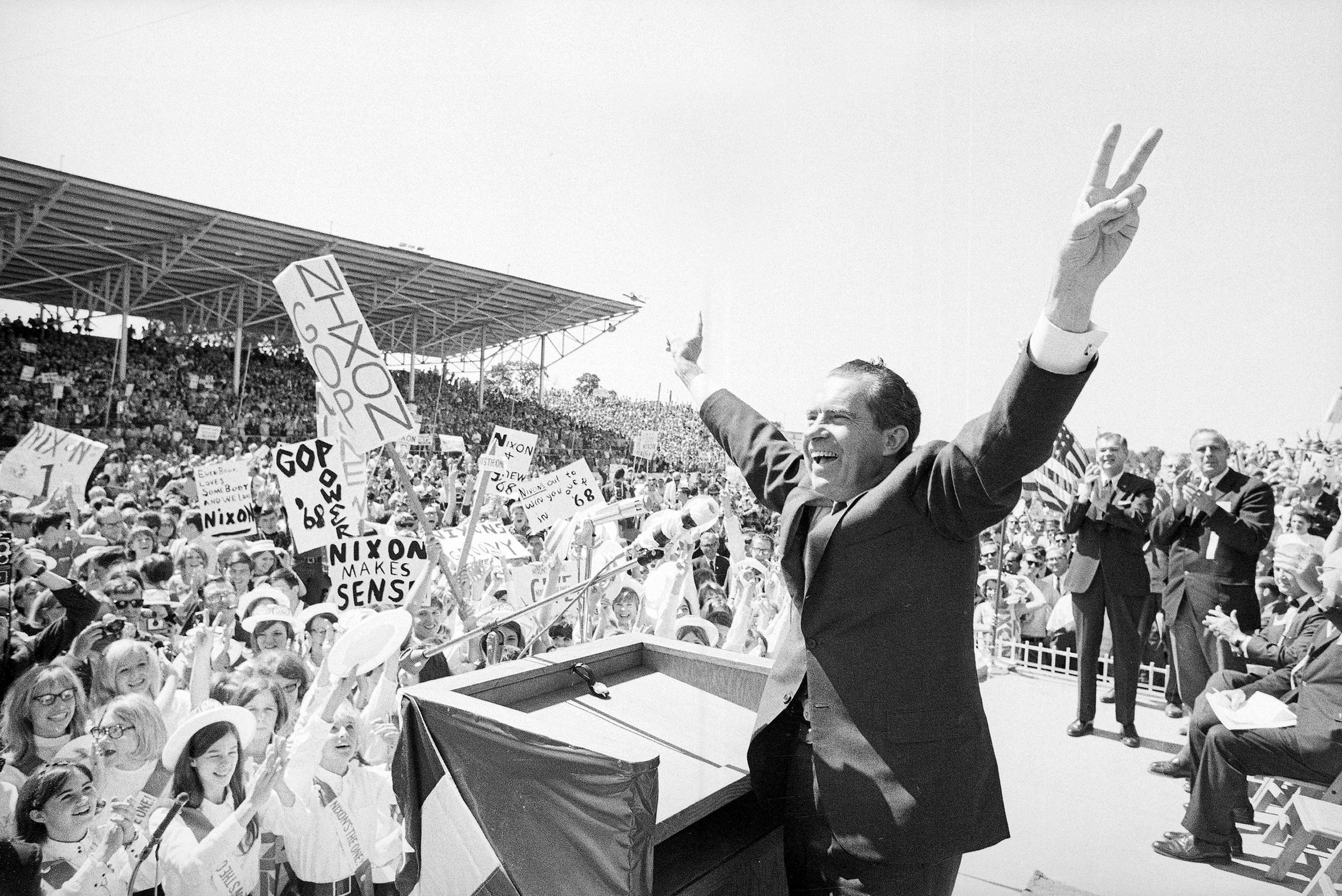By the end of 1966, Richard Nixon was already planning his path to the presidency. In an interview with “US News & World Report” published October 3rd, 1966, Nixon shared his opinions on issues of domestic policy and the political climate of the late 1960’s, and when asked about the 1968 elections he alluded to his future plans in the arena.
RN spoke confidently in his interview about the resurgence of the Republican Party in 1966, predicting that it would be the most significant Republican victory since 1946 if they focused on the issues that he felt people should understand and be wary of. He expressed his concerns specifically with the issue of wartime inflation, which he felt was a warning sign of an impending economic downturn. The solution according to RN was to stop tax increases and cut overall government spending to try to build a surplus. RN warned that the policies of the Johnson administration could trigger a “flash recession”, and that a surplus would be required to act as an economic booster shot when the period of rapid growth tapered off in order to avoid a full recession in the future.
The Republican Party was still majorly fractured from the presidential race of 1964, and though RN was not a candidate he was working hard to build back a solid Republican foundation in 1966. In the interview RN broke down the amount of work he had done for the party and some of the goals he had for its internal growth and success:
“I will be traveling across the country to key congressional districts. By November 8, I will have traveled 161,000 miles since November of 1964, when I started this campaign. I started…on a determined effort to accomplish four things: (1) unify the party; (2) raise funds for the party; (3) encourage new candidates to run for office; (4) assure a party comeback in ’66. “
“Between these two Novembers I will have visited 48 States, will have appeared in more than 100 congressional districts currently held by Democrats, where Republicans are trying to unseat them. So that’s an indication of the magnitude.”
Even though Nixon was not campaigning for himself directly, he was spreading the message that he was a man dedicated to the Republican Party.
When asked about the 1968 election, RN predicted that while the Republican Party would be actively healing from the 1964 divide, the Democratic Party would not have it as easy as in previous years, “… the Democrats are deeply divided, and are not going to be able to heal their divisions as they usually do, because in 1966 they’re all looking at 1968.” RN was looking at 1968 as well, and by 1966 he was no longer denying his level of activity in politics. Nixon remained popular in the polls despite his political inactivity, and though he maintained relationships that he had made in politics he had made no move to campaign for office since he ran in California’s 1962 gubernatorial campaign; however, throughout 1966 he began to speak in interviews more like a presidential candidate than a former leader of the Republican Party.
The noticeable start to RN’s comeback may have been one month later, in the fallout from his report on the Manila conference, but Nixon clearly already saw himself as a presidential candidate. In his interview with “World Report” he even mentioned his own name on the Republican ticket: “As to who will be involved, everybody assumes at the present time…that it’s just basically a two man fight: Romney-Nixon.”

